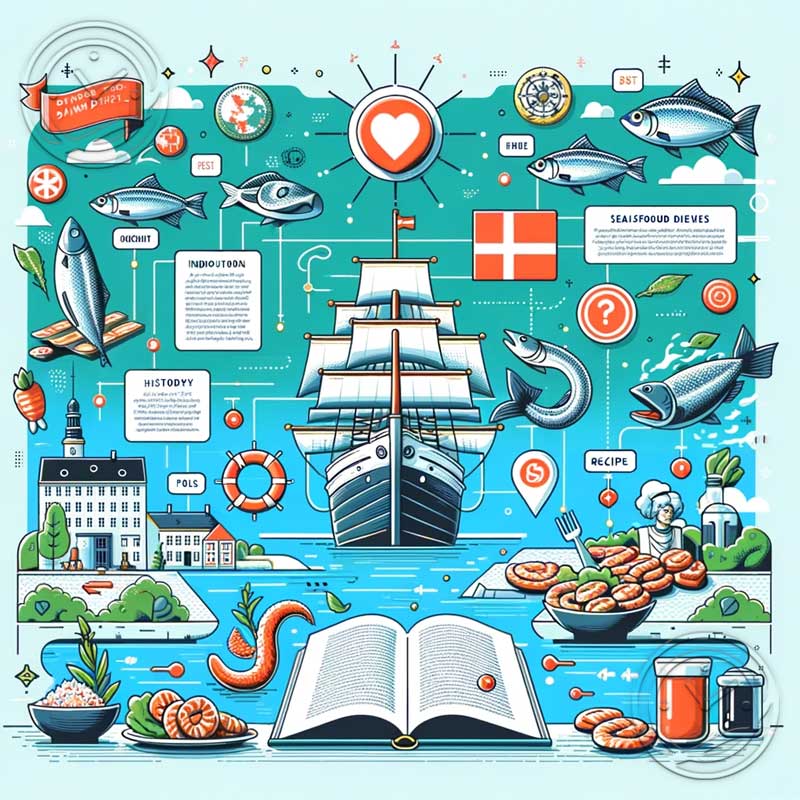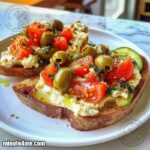Danish Diet and Seafood
The Danish diet is known for its emphasis on seafood, which is often served fresh and simply prepared. Seafood is a major source of protein and other nutrients for Danes, and it is also an important part of the country’s culture and cuisine.
In this article, we will take a closer look at the Danish diet and seafood. We will discuss the different types of seafood that are eaten in Denmark, how they are prepared, and the health benefits of eating seafood. We will also explore the history of seafood in Denmark and the role that it plays in the country’s culture.
The Health Benefits
Seafood is a healthy and nutritious food that provides a variety of essential nutrients.
- Protein
- Fatty acids
- Vitamins
- Minerals
Eating seafood has been linked to a number of health benefits, including:
- Reduced risk of heart disease
- Reduced risk of stroke
- Reduced risk of type 2 diabetes
- Improved cognitive function
- Reduced inflammation
Overall, seafood is a healthy and nutritious food that can provide a number of health benefits.
Experience the allure of Mediterranean cuisine intertwined with the succulent charm of shrimp. Uncover a culinary symphony where health meets…
Different Types of Seafood and How to Prepare Them
There are many different types of seafood available in Denmark, including fish, shellfish, and crustaceans. Each type of seafood has its own unique flavor and texture, and there are many different ways to prepare it.
Some of the most popular types of fish in Denmark include salmon, herring, cod, prawns, shrimp, mussels, oysters, trout, mackerel, haddock, plaice, sole, ling, and skate.
Fish can be cooked in a variety of ways, including grilling, baking, frying, poaching, steaming, and boiling.
- Grilling: To grill fish, brush the fish with oil and season with salt and pepper. Cook the fish over medium heat for 5-7 minutes per side, or until cooked through.
- Baking: To bake fish, preheat the oven to 375 degrees Fahrenheit. Brush the fish with oil and season with salt and pepper. Place the fish on a baking sheet and bake for 15-20 minutes, or until cooked through.
- Frying: To fry fish, coat the fish in flour, egg, and breadcrumbs. Fry the fish in hot oil for 3-5 minutes per side, or until golden brown and cooked through.
- Poaching: To poach fish, bring a pot of water to a simmer. Add salt and pepper to the water. Place the fish in the water and poach for 5-7 minutes, or until cooked through.
- Steaming: To steam fish, place the fish in a steamer basket over boiling water. Steam the fish for 5-7 minutes, or until cooked through.
- Boiling: To boil fish, bring a pot of water to a boil. Add salt and pepper to the water. Place the fish in the water and boil for 5-7 minutes, or until cooked through.
Shellfish and crustaceans are also popular in Denmark. Some of the most popular types of shellfish include shrimp, mussels, oysters, and lobster.
Shellfish and crustaceans can be cooked in a variety of ways, including steaming, boiling, grilling, and frying.
- Steaming: To steam shellfish, place the shellfish in a steamer basket over boiling water. Steam the shellfish for 5-7 minutes, or until cooked through.
- Boiling: To boil shellfish, bring a pot of water to a boil. Add salt and pepper to the water. Place the shellfish in the water and boil for 5-7 minutes, or until cooked through.
- Grilling: To grill shellfish, brush the shellfish with oil and season with salt and pepper. Cook the shellfish over medium heat for 5-7 minutes per side, or until cooked through.
- Frying: To fry shellfish, coat the shellfish in flour, egg, and breadcrumbs. Fry the shellfish in hot oil for 3-5 minutes per side, or until golden brown and cooked through.
No matter how you choose to prepare it, seafood is a delicious and nutritious addition to any meal.
Danish Seafood Recipes
Here are some popular Danish seafood recipes:
- Smørrebrød is a traditional Danish open-faced sandwich that is often topped with seafood, such as smoked salmon, herring, or shrimp.
- Frikadeller are Danish meatballs that are made with seafood, such as cod or shrimp.
- Æbleflæsk is a Danish dish made with pork belly that is roasted with apples and served with a mustard sauce.
- Kartoffelmad is a Danish dish made with potatoes, bacon, and parsley.
- Flæskesteg is a Danish roast pork dish that is often served with crackling.
Are you looking for a healthy and delicious diet that is easy to follow? If so, the Danish diet may…
Where to Find Fresh Seafood in Denmark
There are many great places to find fresh seafood in Denmark. Here are a few of the best options:
- Fish markets
- Fishmongers
- Supermarkets
- Restaurants
Each of these options has its own advantages and disadvantages. Fish markets offer the freshest seafood, but they can be more expensive than other options.
Fishmongers are also a good source of fresh seafood, but they may not have as wide a selection as fish markets.
Supermarkets are a convenient option for those who want to buy seafood on a budget, but the seafood may not be as fresh as it would be at a fish market or fishmonger.
Restaurants are a great way to enjoy fresh seafood, but they can be more expensive than other options.
No matter which option you choose, you’re sure to find delicious and fresh seafood in Denmark.
The History
Seafood has been a staple of the Danish diet for centuries, and there are many historical records that attest to this. In fact, some of the earliest evidence of seafood consumption in Denmark dates back to the Stone Age.
- During the Stone Age, Danish people ate a variety of seafood, including shellfish, fish, and seals.
- In the Viking Age, seafood was still a major part of the Danish diet, and it was often used as a source of protein and vitamins.
- During the Middle Ages, seafood continued to be a popular food, and it was often served at feasts and banquets.
- In the 17th and 18th centuries, seafood became even more popular, and it was often exported to other countries.
- In the 19th and 20th centuries, seafood remained a staple of the Danish diet, and it was often eaten in simple dishes such as fish cakes and pickled herring.
- Today, seafood is still a major part of the Danish diet, and it is enjoyed by people of all ages.
The history of seafood in Denmark is a long and fascinating one, and it is clear that seafood has played an important role in the country’s cuisine for centuries.
Discover the secrets of the Danish Diet meal planning, a healthy and balanced eating plan rooted in Denmark's traditional foods….
The Culture of Seafood in Denmark
Seafood is a staple of the Danish diet, and it is eaten in a variety of ways.
- One of the most popular ways to eat seafood in Denmark is in smørrebrød, a traditional open-faced sandwich.
- Seafood is also used in soups, stews, and casseroles.
- It is also grilled, fried, or baked.
Seafood is a popular choice for Danes because it is fresh, healthy, and versatile.
The Danish fishing industry is one of the largest in the world, and it provides a significant source of food and jobs for the country.
Seafood is also an important part of Danish culture.
- There are many festivals and celebrations that revolve around seafood.
- Seafood is often used in traditional Danish art and music.
- It is also a popular topic of conversation among Danes.
Overall, seafood is an important part of the Danish diet, culture, and economy.
The Future
The future of seafood in Denmark is uncertain. On the one hand, the country has a long and proud tradition of fishing and seafood consumption. On the other hand, the Danish fishing industry is facing a number of challenges, including climate change, overfishing, and pollution.
- Climate change is causing the sea to become warmer, which is making it difficult for some fish species to survive.
- Overfishing is depleting fish stocks, which is also making it difficult for the fishing industry to thrive.
- Pollution is harming marine ecosystems and making it difficult for fish to reproduce.
Despite these challenges, there are a number of ways to ensure the future of seafood in Denmark.
- The government can work to reduce climate change and its impacts on the marine environment.
- The fishing industry can adopt more sustainable practices, such as reducing fishing effort and catch limits.
- Consumers can make choices that support sustainable seafood production.
By working together, we can ensure that the future of seafood in Denmark is bright.
Conclusion
In conclusion, the Danish diet is a healthy and sustainable way to eat. Seafood is a major part of the Danish diet, and it is a good source of protein, vitamins, and minerals. Eating seafood can help to reduce your risk of heart disease, stroke, and some types of cancer. Additionally, seafood is a sustainable food source, as it can be farmed without harming the environment.
If you are looking for a healthy and sustainable way to eat, the Danish diet is a great option. By incorporating more seafood into your diet, you can improve your health and help to protect the environment.







